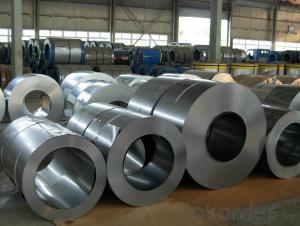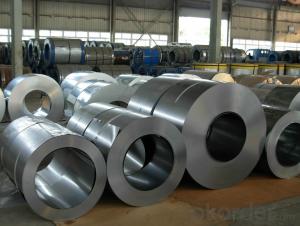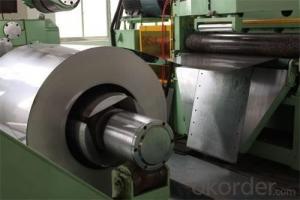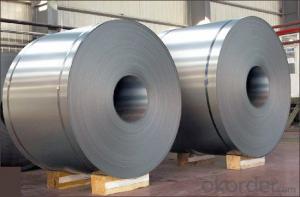Cold Rolled Steel Coil with Prime Quality various sizes and Lowest price
- Loading Port:
- Shanghai
- Payment Terms:
- TT OR LC
- Min Order Qty:
- 100 m.t.
- Supply Capability:
- 10000 m.t./month
OKorder Service Pledge
OKorder Financial Service
You Might Also Like
1.Structure of Cold Rolled Steel Description:
The raw material of cold rolled steel coil/sheet is high quality hot rolled product, and after pickling continuous rolling
3.Cold Rolled Steel Images
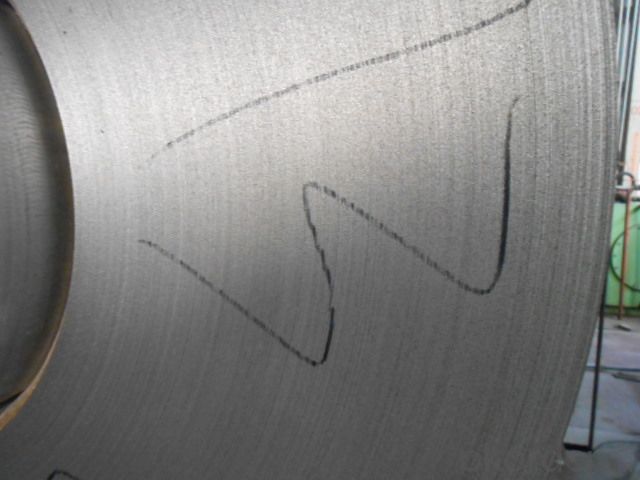
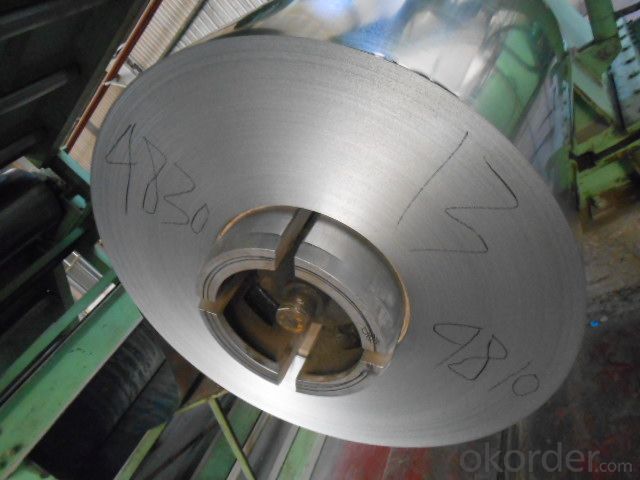
We have established the international advanced quality management system,every link from
4.Cold Rolled Steel Specification
Width: 1250,600-1250mm
Coil weight:3-12 MT
Standard:AISI,ASTM,DIN,GB,JIS,JIS G3302
Thickness: 0.16mm~1.5mm,0.16-1.5mm
2.Main Features of the Cold Rolled Steel:
• High strength
• Good formability
5.FAQ of Cold Rolled Steel
We have organized several common questions for our clients,may help you sincerely:
is one of the large-scale professional investment casting production bases in China
2.How to guarantee the quality of the products?
We have established the international advanced quality management system,
2.Main Features of the Cold Rolled Steel:
• High strength
• Good formability
- Q:How are steel coils used in the manufacturing of shipping containers?
- Steel coils are used in the manufacturing of shipping containers to provide strength, durability, and structural integrity. These coils are processed and shaped into the necessary components, such as walls, floors, and roofs, which are then assembled to create a sturdy container. The steel coils also allow for easy transportation and stacking of the containers, ensuring safe and efficient shipping of goods worldwide.
- Q:What are the different types of steel coil edge conditions?
- There are several different types of steel coil edge conditions, each designed to meet specific requirements and applications. The most common types include: 1. Mill Edge: Mill edge is the default edge condition for hot-rolled steel coils, where the edges are left as they come out of the rolling process. This edge condition is characterized by a slightly rough and uneven surface. 2. Slit Edge: Slit edge is created by cutting the coil along its width to achieve narrower strips. This edge condition is typically smoother and more uniform than mill edge, making it suitable for applications where a clean and precise edge is required. 3. Trimmed Edge: Trimmed edge is achieved by removing irregularities and imperfections from the edges of the coil. This process results in a straight and smooth edge, making it suitable for applications where a precise and uniform surface is necessary. 4. Deburred Edge: Deburred edge is created by removing burrs or sharp edges from the coil. This edge condition is commonly used in applications where safety is a concern, as it eliminates any potential hazards associated with sharp edges. 5. Round Edge: Round edge is achieved by rounding the corners of the coil. This edge condition is often employed in applications where the material needs to be easily handled or when there is a need to prevent damage to other materials or surfaces. 6. Slit and Deburred Edge: Slit and deburred edge combines the benefits of both slit edge and deburred edge conditions. It involves cutting the coil to achieve narrower strips and then removing any burrs or sharp edges, resulting in a clean and safe edge. Each of these edge conditions serves a specific purpose and is chosen based on the requirements of the application. By understanding the different types of steel coil edge conditions, one can select the most suitable option to ensure optimal performance and safety.
- Q:I work in a steel foundry 10-12 hours a day where we melt and pour stainless steel tubes. The pour temperature for some of them is very close to the boiling point of stainless steel (about 3800 degrees) because it has to be VERY liquid for the application we use it. Anyway, it does boil a little and we breath in the vapours which I can assure you ARE indeed vapourized stainless steel (it collects and cools on everything and makes a nice shiny coating). Ok, so to the question, does breathing vapourized stainless steel all day pose a health risk such as cancer? Anyone know? I'm just curious.
- I would imagine it's not good. I doubt cancer but I suppose it may be possible. Shouldn't you guys have respirator gear on? Where's OSHA when you need'em? ;)
- Q:How are steel coils processed for cold rolling or hot rolling?
- Steel coils are first unwound and inspected for any defects. Then, they are cleaned and treated to remove any impurities. For cold rolling, the coils are passed through a series of rollers at room temperature to reduce their thickness and improve their surface finish. On the other hand, for hot rolling, the coils are heated to high temperatures and then passed through rollers to achieve the desired thickness and shape.
- Q:Can steel coils be stamped?
- Yes, steel coils can be stamped. Stamping is a common process used to shape and form steel coils into various shapes and sizes for different industrial applications.
- Q:Can steel coils be coated with anti-static materials?
- Yes, steel coils can be coated with anti-static materials to help reduce or eliminate static electricity buildup and discharge. Anti-static coatings are commonly applied to various surfaces, including metals, to prevent damage to sensitive electronic components, improve safety, and enhance overall product performance.
- Q:How do steel coils resist corrosion?
- Steel coils resist corrosion through a combination of factors including the presence of protective coatings, the use of corrosion-resistant alloys, and proper handling and storage practices. The most common method to prevent corrosion in steel coils is the application of protective coatings such as zinc, known as galvanization. This process forms a barrier between the steel and its environment, preventing exposure to moisture and corrosive elements. The zinc coating acts as a sacrificial layer, corroding in place of the steel. Another method to enhance corrosion resistance is the use of corrosion-resistant alloys, which are specifically designed to withstand harsh environments. These alloys contain elements such as chromium, nickel, or molybdenum, which form a passive oxide layer on the surface of the steel, protecting it from corrosion. Proper handling and storage practices also play a crucial role in preventing corrosion. Steel coils should be stored in a dry and well-ventilated area to minimize exposure to moisture. They should be protected from contact with other metals and materials that may cause galvanic corrosion. Regular inspection and maintenance are also important to identify and address any signs of corrosion early on. In summary, steel coils resist corrosion by utilizing protective coatings, corrosion-resistant alloys, and proper handling and storage practices. These measures work together to prolong the lifespan of steel coils and ensure their durability in various environments.
- Q:I have a knife with AUS8 Stainless Steel. No idea what that means. I want to know some of the best stainless steels for knifes and all you can tell me about stainless steel would be great. I was browsing google and looking at grades and had no idea what all the numbers meant. Thanks!
- Ok so listen she already likes me what should I say
- Q:How are steel coils used in the production of shipbuilding components?
- Steel coils are used in the production of shipbuilding components as they provide a strong and durable material for constructing various parts of ships such as hulls, decks, and bulkheads. These coils are processed and shaped into required forms, ensuring the structural integrity and stability of the ship.
- Q:How are steel coils used in the production of electrical conduits?
- Steel coils are used in the production of electrical conduits in several ways. Firstly, steel coils are used as the raw material for manufacturing electrical conduits. These coils are made of high-quality steel that is specially processed and formed into a long, continuous strip. Once the steel coils are obtained, they are fed into a machine called a slitter. The slitter cuts the coils into narrower strips of the desired width. These narrower strips will serve as the base material for the electrical conduits. The next step is to shape the steel strips into the desired conduit shape. This is done by passing the strips through a series of rollers and other shaping tools. The steel strips are gradually formed into the round or rectangular shape of the conduit. The rollers apply pressure and manipulate the steel strip until it reaches the desired shape. After the shaping process, the ends of the steel strips are welded together to create a continuous conduit. This welding process ensures that the conduit will have a seamless structure, which is important for its functionality and durability. Once the conduits are formed and welded, they undergo further processing to enhance their properties. This may include processes such as galvanizing, where the conduits are coated with a layer of zinc to protect them from corrosion. This additional layer provides the conduits with increased longevity, making them suitable for various electrical applications. In summary, steel coils are essential in the production of electrical conduits. The coils serve as the raw material that is shaped, welded, and processed to create the final product. The use of steel coils ensures that the electrical conduits are strong, durable, and capable of withstanding the demands of electrical installations.
1. Manufacturer Overview |
|
|---|---|
| Location | |
| Year Established | |
| Annual Output Value | |
| Main Markets | |
| Company Certifications | |
2. Manufacturer Certificates |
|
|---|---|
| a) Certification Name | |
| Range | |
| Reference | |
| Validity Period | |
3. Manufacturer Capability |
|
|---|---|
| a)Trade Capacity | |
| Nearest Port | |
| Export Percentage | |
| No.of Employees in Trade Department | |
| Language Spoken: | |
| b)Factory Information | |
| Factory Size: | |
| No. of Production Lines | |
| Contract Manufacturing | |
| Product Price Range | |
Send your message to us
Cold Rolled Steel Coil with Prime Quality various sizes and Lowest price
- Loading Port:
- Shanghai
- Payment Terms:
- TT OR LC
- Min Order Qty:
- 100 m.t.
- Supply Capability:
- 10000 m.t./month
OKorder Service Pledge
OKorder Financial Service
Similar products
New products
Hot products
Related keywords
